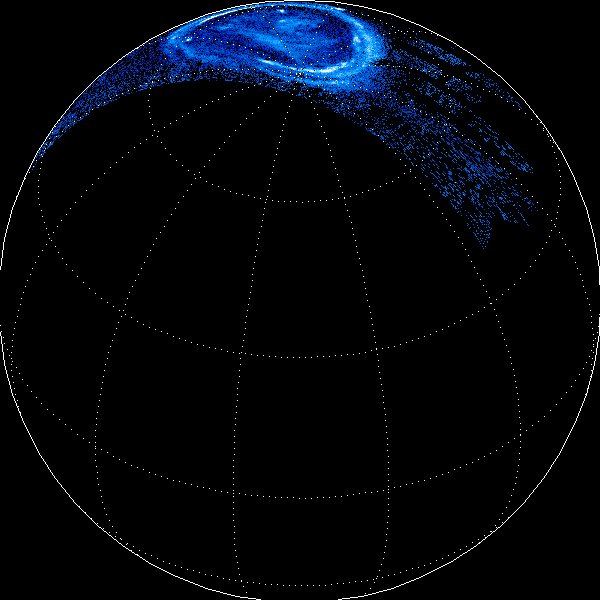Jupiter’s polar auroras
At each of its orbits, the Juno probe amazes us with its images of Jupiter’s polar auroras, but also with its measurements of particles, magnetic field and electromagnetic waves that reveal the underlying physical mechanisms. The principle of auroras is well known. The magnetic environment of planets (the magnetosphere) is filled with ions and electrons (a plasma) guided by the magnetic field. Generally speaking, any process that “agitates” the magnetic field results in an acceleration of the particles. They are “precipitated” towards the planet and, guided by the magnetic field, concentrate around the poles. By collisions, they excite the atmospheric molecules which then emit a light at the origin of the polar aurora.

On Earth, we distinguish between the “diffuse” auroras and, at higher latitudes, the “discrete” ones that form the famous light curtains that are so photogenic. It is well established that the latter are caused by disturbances in the magnetosphere linked to solar activity. They can be associated with quasi-static electric fields that create beams of mono-energetic electrons precipitated towards the Earth or, more rarely, with wave turbulence that accelerates the electrons towards the “bottom” and “top”. We already knew before Juno that the situation would be different for Jupiter. Indeed, the magnetosphere of Jupiter is rapidly rotating and populated by particles continuously produced by the volcanic activity of Io. This forms a rotating plasma disk, in which the particles flow outwards. It was suspected that this continuous radial transport was a primary cause of auroras. In addition, several moons – in particular Io and Ganymede – orbit in the disk, disturbing the magnetic field and can therefore also cause specific auroras.
These hypotheses have not been challenged, but many surprises have come from Juno and the associated observation programs. We now know that the power of the auroras is phenomenal, it corresponds to one hundred thousand nuclear reactors (100 TW) and raises the upper polar atmosphere by several hundred degrees (from -70° to over 400°)! We have seen auroral “explosions” that have disturbed the entire magnetosphere up to the orbit of the moon Io! An X-ray component of the auroras was revealed, due to precipitations of energetic ions. Juno also revealed that the internal zone of the disc, up to approximately 30-50 Jovian radii, corresponds to aurorae of rather “diffuse” nature, but with localized intensifications which testify to particular accelerations, injections of energetic particles and generations of radio rays. The probe also reveals that the most intense auroras are due to turbulent electric fields and random particle acceleration hundreds of times more powerful than at Earth. Understanding and modeling all the complex and multiscale processes involved in the Jovian aurora remains a challenge!
IRAP Contact
- Philippe Louarn, philippe.louarn@irap.omp.eu






